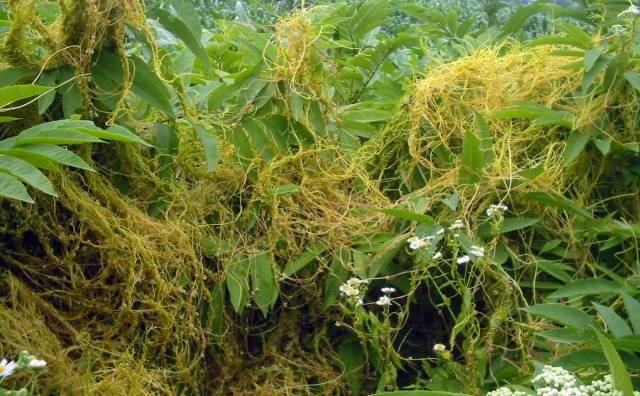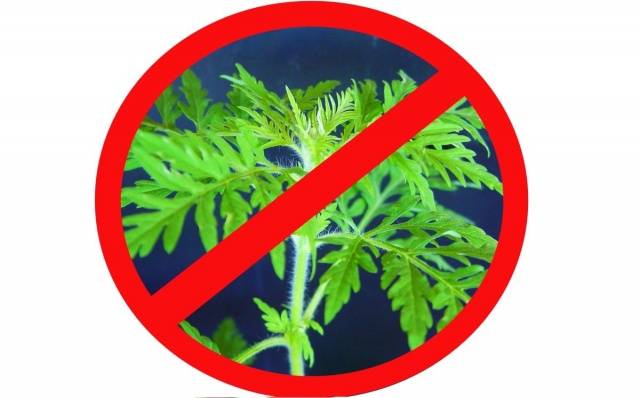Content
On every plot of land there is a struggle against weeds. They pollute the soil and take nutrients from cultivated plants. But there are weeds that are being combated on a national scale. These weeds are especially harmful and are called quarantine weeds. Weed infestation negatively affects agriculture:
- Reduces the amount of harvest or leads to its complete destruction;
- Reduces pasture productivity;
- Contaminates and deteriorates the quality of harvested grain, reduces the quality of harvesting, disables harvesting equipment, and leads to additional costs for cleaning the crop from seeds of harmful plants;
- Promotes infection by viruses and bacteria that are dangerous to cultivated plants, and the development of pests of agricultural crops;
- Leads to disruption of the composition and structure of the local plant community, displacing previously growing grasses, which negatively affects the fauna of the region;
- Causes damage to livestock production, as some types of weeds are toxic to livestock;
- Causes allergic reactions in humans.
The development of interstate trade relations leads to the transfer of plants from one habitat to another. It is difficult to predict how “strangers” will behave, but as practice shows, in a new place weeds are more aggressive than in their usual growing environment, because in their homeland they have natural enemies: pests, diseases, other biofactors, but in new places these plants have no natural enemies. To protect farmland from contamination by dangerous weeds, many countries around the world have developed quarantine measures to reduce the risk of contamination of the area. Taking into account the fact that weed seeds can be transported with imported grain, seeds and breeding animals, quarantine control is carried out over the transportation of these goods, and quarantine weeds are combated within the country.
Quarantine weeds growing in Russia
The following quarantine weeds grow in our country:
- Dodders.
- Creeping bitterweed.
- Ambrosia wormwood.
- Ambrosia tripartite.
- Ambrosia is perennial.
- Prickly nightshade.
- Nightshade triflorum.
The article will present photos of harmful herbs and methods of combating quarantine weeds.
Dodders
We can say that all varieties of dodder are the most dangerous parasitic weeds. They are extremely fertile and viable. Originating from tropical latitudes, dodder has spread almost throughout the world, successfully adapting to new conditions, forming new subspecies. There are thick and thin-stemmed forms.More than 30 species of dodder grow in Russia. The most dangerous and widespread are field dodder, clover dodder, hop dodder, flax dodder, short-flowered pepper dodder and leman dodder.
The danger of dodder
Dodder has no root system. Dodders feed by attaching themselves to the host plant with suckers. Suckers (haustoria) penetrate deeply into the tissue of the cultivated plant. The stems of the weed are almost devoid of chlorophyll, thread-like, curly, covered with scaly leaves and numerous small flowers. Dodders use perennial and annual grasses, trees, shrubs, and vineyards as host plants. By sucking out all the juices, dodders disrupt the “host’s” metabolism, the plant is weakened, and lags behind in growth and development. Often entire tracts of cultivated plants infected with the parasite die. Hay produced from weed-infected grasses loses its nutritional properties, quickly becomes moldy, and contributes to disease and death of animals. Dodders, penetrating into plants, transmit viral diseases.
The spread of dodder occurs mainly with the seeds of cultivated species when they are insufficiently purified. If hay contaminated with dodder gets into the livestock feed, then the weed seeds will fall with the manure onto the areas fertilized with it. Dodder seeds are similar to the seeds of their host plants, this is the result of a parasitic adaptation and makes seed cleaning of cultivated grasses more difficult.
Fighting methods
The main way to counter the spread of dodder is through preventive measures:
- seed cleaning;
- soil testing;
- testing of crops;
- quarantine measures;
- phytopathological examinations;
- cleaning the arable horizon;
- stimulating the germination of dodder with the destruction of these seedlings;
- provocative autumn and spring watering;
- exclusion for 5-6 years from crop rotation of crops affected by dodder.
Creeping bitterweed (pink)
This perennial root sucker weed grows in vineyards and orchards, in pastures and meadows, along highways, on railroad slopes and vacant lands.
The harmfulness of bitterling
The plant has a powerful root system; its main vertical root penetrates the soil to a depth of more than ten meters and has an extensive system of horizontal roots. It propagates both by seeds, their germination in the soil is 3-5 years, and by rhizomes. Bitterweed spreads with poorly cleaned seed, straw and hay.
The root system of bittergrass grows very quickly, depriving cultivated plants of moisture and minerals and reducing their yield by half. One weed plant within a year grows into a clump 5-6 m in diameter, and its intertwined roots do not give any chance to cultivated plants. Light-loving bitterling does not form seeds in shaded areas; the growth of its root system slows down, but retains the ability for explosive growth when favorable conditions occur.
How to fight
Preventive measures, including:
- cleaning of seed material;
- using manure composted for 3-4 months, this is the only way the bitterling seeds will completely lose their germination;
- inclusion in livestock feed of grain waste contaminated with weed seeds, only ground or steamed.
mechanical methods:
- systematic mowing of weed pockets before it begins to bloom on vacant lands and fields;
- Before harvesting the main crop, mowing clumps of bitterweed followed by burning the mown mass of the plant.
agrotechnical methods:
- pruning the root system and darkening the weed clumps;
- a combination of black fallow (20-25% of the area) with crops that suppress bittersweet with their powerful green mass (rye, oats, barley, alfalfa);
- stubble peeling, autumn plowing and the rise of black fallow in the autumn;
- the use of chemical agents (targeted herbicides) and biological ones, such as fruit flies, bitter nematodes, and gall midge.
Ambrosia artemifolia
It came to our continent from North America and quickly spread, causing significant damage to agriculture and human health. Powerful roots and massive above-ground parts of the weed suppress cultivated plants. During the growing season, ambrosia literally sucks water and minerals from the soil, dries out and depletes the soil, shades cultivated plants, displacing them from fields and pastures. During its flowering period, the weed releases a huge mass of pollen, causing severe allergic reactions. Ambrosia blooms from July to October. The annual plant reaches a height of 1.8 m, the taproot goes 4 meters deep into the soil. Ambrosia reproduces by seeds, the number of which from one bush can reach 40 thousand. High germination is also observed in unripe weed seeds. The plant is well adapted to flooding and frequent mowing. The photo shows the size of the plant and the scale of the disaster.
Fighting methods
Traditionally agrotechnical, biological and chemical, with the most effective method being proper agricultural technology. Crop rotation, crop care, preventing re-inoculation of the soil with weeds. When destroying ragweed in summer cottages and adjacent areas, the weed should be destroyed by the roots, because after mowing, several new ones grow in place of one stem. By combining agricultural methods with the use of herbicides permitted in the Russian Federation, it is possible to curb the spread of ragweed.
Ambrosia tripartite
An annual plant, a large spring weed, its stem becomes woody in the fall. It has many similar properties to ragwort, differing in early ripening, larger seed sizes and their buoyancy, due to which the onset of infection occurs in low-lying, flooded areas. Spreading, harm and the methods of controlling this weed are the same, but this type of weed is better destroyed by chemical means, because its leaf surface is larger.
Perennial ragweed
Perennial, root shoot weed. The main root of the plant is taproot, has numerous shoots from which new above-ground shoots grow. Often found in pastures and meadows. It is not replaced by perennial grasses; the rhizomes of the plants are frost-resistant. This weed is difficult to eradicate, causes a decrease in the yield and quality of cultivated plants, and weakens the productivity of pastures, because This weed is not eaten by livestock.
Fighting methods
Destruction of weed rhizomes with herbicides, prevention of seed clogging, mowing or weeding out the weed before it is seeded.If the field is heavily contaminated with weeds, the field is left under clean fallow; this is a kind of quarantine method. In the fall, 2-3 peelings are carried out, and fallow plowing is carried out in the spring, after mass emergence of the weed. Subsequently, this field is cultivated several times in layers with simultaneous harrowing. Next season, winter wheat is sown.
nightshade
Emigrated to Europe from North America. All parts of the plant are densely planted with thorns. The diameter of one plant is about 70 cm, bears fruit from August to October. About 180 berries ripen on each plant, each of which contains from 50 to 120 seeds, which become viable after wintering and retain it for 7-10 years. After the seeds ripen, the plant breaks off and rolls over long distances. Weed seeds are carried by the wind and travel on the wheels of vehicles. The main root of the plant grows into the soil to a depth of 3 meters. Under favorable conditions, the ground part of the weed grows a huge green mass about a meter high. It grows on roadsides and wastelands, crowding out all other herbs. The lack of light at the beginning of the plant's growing season has a depressing effect on it. It infests crops, pastures, vegetable gardens and orchards. The extensive root system of the weed deprives cultivated plants of nutrition and water. Crop loss in infected areas is 40-50%.
Straw containing nightshade thorns is not even suitable as bedding for livestock. Nightshade serves as a host plant for potato moth, Colorado potato beetle and some viruses.
Methods to combat this weed include a complex of agrotechnical and chemical measures.
Nightshade triflorum
Came from North America, distributed in central Europe. In Russia, it was found in Altai and the Omsk region. The herbaceous weed is an annual plant with high seed productivity. 10-14 thousand seeds ripen on one plant, and their germination persists for 9 years. Forms large bushes with rigid branches. This weed is able to produce adventitious roots from stems and take root easily. A plant removed by weeding and left on the ground easily takes root again. Nightshade seeds are sticky, so they stick to various objects and are carried over long distances. The weed is poisonous and has an unpleasant cadaverous odor.
Fighting methods
Prevention: cleaning of seed and feed grain, the processing of which should be carried out using technology that deprives the seeds of germination. Rotted manure, in which all weed seeds have lost their viability, should be applied to the fields.
Agricultural technology: flat-cut soil cultivation, crop rotation, harrowing, inter-row cultivation of row crops. The use of recommended herbicides is acceptable.
Conclusion
When destroying weeds on your site, pay attention to whether you have grown any quarantine weed that can negate all your efforts to grow cultivated plants.


















